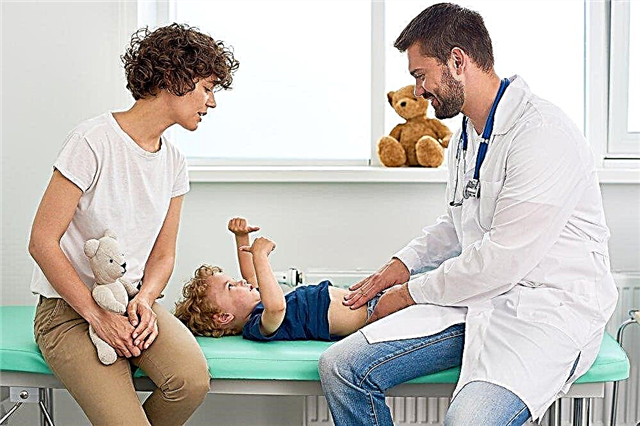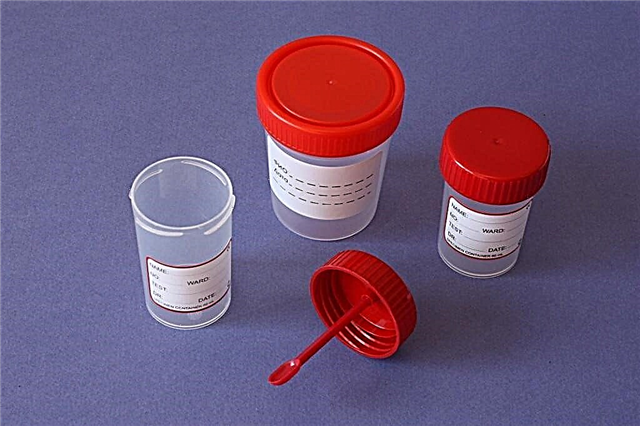As the baby grows up and develops, parents gradually learn about possible health problems. The child has a fever and a stomach ache - this is a serious situation that requires qualified assistance. How to alleviate the condition of the baby, why does the malaise continue, how to prevent the development of diseases of internal organs?

The child has a stomach ache
If the baby is restless, has poor sleep, moods and frequent crying, this indicates possible pain in the abdomen. The child is too young to explain to his parents the reason for his anxiety. Adults need to be careful about changes in baby's behavior in order to correctly identify the source of pain.
Causes and possible diseases
To quickly understand that the pain is causing the tummy, you can put your hand on it and carefully observe the child for a while. If the child's temperature readings rise and the lower abdomen hurts, the cry increases significantly. Now parents need to find out what happened, what is the source of the baby's pain. There are four options:
- Intestinal colic. The problem is observed in more than 70% of babies. Experts have not yet come to a consensus. There are a number of general guidelines that can help reduce gas when breastfeeding or formula feeds.

The child has severe colic
- Disruption of the digestive process. If the milk has insufficient or excess fat content, the baby develops diarrhea or constipation. When feeding, food is not completely absorbed. If the milk is too fat, additional water is required. If the percentage of fat is insufficient, it is recommended to strengthen the nutrition with milk formulas.
- Stress. With a bad psychological climate in the family, the child feels discomfort. With changes in the mood of the mother, the baby reacts very sensitively, up to pain symptoms.
- The presence of an infection. When viruses and bacteria enter a small organism, gastroenteritis - "stomach" flu, may develop, and a cough may appear. If the disease is of viral etiology, it passes quickly enough. With a bacterial infection, drug therapy is required as directed by a pediatrician.
Attention! In rare cases, severe pain and a rise in temperature in a child can be with appendicitis or intestinal obstruction. Only a specialist can diagnose the cause.
Symptoms and diagnosis of the disease
When the baby is in pain, it's hard not to notice. The child is constantly crying, trying to lie in the fetal position, tucking his knees. It is necessary to assess the condition of the baby for the following factors:
- How my tummy hurts. With intestinal colic, whims end quickly enough. If the discomfort does not go away for several hours, a rise in temperature is recorded, this is a signal to call the pediatrician.
- Duration of pain symptoms. With increased gas production, the child quickly stops being capricious and crying. But seizures of a prolonged nature (more than a day) cannot be ignored.
- Place of pain localization. If the navel area hurts, then in most cases the anxiety is explained by colic. If the doctor identifies another painful area, especially in the lower right, an attack of appendicitis is possible.
- How the child feels. Skin color, pallor, perspiration, increased lethargy or drowsiness are warning signs. Avoiding food and drink for 3-5 hours is especially serious.
- The presence of vomiting. High temperatures associated with a viral infection often cause vomiting. Prolonged urge during the day with pain syndrome is a reason to call an ambulance.
- The color of the vomit testifies to a lot. With a shade of predominantly greenish, yellow, the presence of blotches of fresh coagulated blood, an ambulance is needed.

Diarrhea in a child
- Pain in the baby's tummy is aggravated by diarrhea. These are signs of infection. The period of diarrhea is possible up to 72 hours. If blood droplets are visible in the feces, a doctor is needed.
- It is not uncommon for a child to experience abdominal pain when urinating. It is necessary to analyze its regime: if it is speeded up, these are signs of an infectious process. I need medical help.
Important! The appearance of various rashes on the skin, fever and pain in the tummy indicate dangerous diseases. Here only a specialist will be able to correctly diagnose and prescribe therapy.

The temperature has risen
How to help a child in this condition
With intestinal colic, the parents of the child are able to help their baby. It is necessary to monitor the nutrition of the nursing mother. It is better not to include in the diet foods that cause additional gas formation: these are legumes, beets, mushrooms, peppers, cottage cheese. With artificial feeding, you must follow the feeding schedule every day, the bottle must have a device for air outlet.
Self help baby
The child is advised to do special exercises to help the gases come out and reduce the pain in the tummy. The exercise "bicycle" helps a lot, in which the baby is put on the back and in turn pull the legs to the body. Parents need to follow these tips:
- when breastfeeding, the mouth should hold the nipple tightly so that air does not enter;
- after eating, you need to hold the child vertically for 10 minutes so that the air comes out by itself;
- it is useful for the baby to lie on his stomach before feeding;

Baby on belly before feeding
- it is recommended to give herbal infusions with dill seed, they reduce colic;
- put an additional soft napkin on the navel.
If the child has constipation, his stomach will be very sore, and the temperature may even rise to 37-38 degrees. If the baby is breastfed, the mother needs to analyze her nutrition, excluding strong tea, flour products, a lot of protein. Iron-based infant formula can cause constipation. Better to pick up the mixture with your doctor. We must not forget about water for a child, especially for artificial ones.
When to call a doctor
The cause of constipation or diarrhea can be pathologies, therefore, if the problem is not eliminated within a day, you need to consult a doctor. The child's temperature rose to 39 and abdominal pain is a serious symptom. Strong crying of a child for a long time can be with a number of pathologies, united by the term "acute abdomen". These include:
- an attack of appendicitis;
- stomach ulcer, intestines;
- peritonitis.
Only a pediatrician can make a normal diagnosis. Before his arrival, it is better not to give the child anesthetic so as not to "smear" the picture of pain. Emergency honey. help is needed with the following symptoms:
- pain sensations last more than 120 minutes;
- pain continues with contractions and the general period is more than 12 hours in a row;
- vomiting interspersed with blood, bile;
- loose stools with blood clots.
In some cases, ARVI can be accompanied by pain in the abdomen. If the child's relatives managed to get sick, then the baby's malaise is explained by infection.

The kid has a cold and is capricious
Preventive measures
To alleviate the condition of the baby with ordinary colic, pediatricians advise:
- You cannot overfeed a child under 1 year old. The minimum break between meals is 2 hours.
- Use a pacifier to keep your baby calm.
- Monitor the temperature and humidity in the children's room.
- If the baby is receiving breast milk, the mother's diet needs to be adjusted.
- Gradually harden the baby to boost immunity.
Reduction of irritant products in the nurse's diet - with caffeine and dairy products. If your baby's anxiety has increased, the problem is not changing the diet.
Important! Experts advise to give up spicy products, cabbage (gas formation increases from them). When feeding with formula, you need to select other products with the pediatrician.

Doctor waiting
If the parents deduce the pattern of discomfort and feeding, then the reason is colic in the baby. It is enough to follow the recommendations to eliminate the cause of the pain. If the child has a stomach ache, and the temperature is 38 and above, the situation cannot be let go. Only a pediatrician can diagnose a possible pathology.



